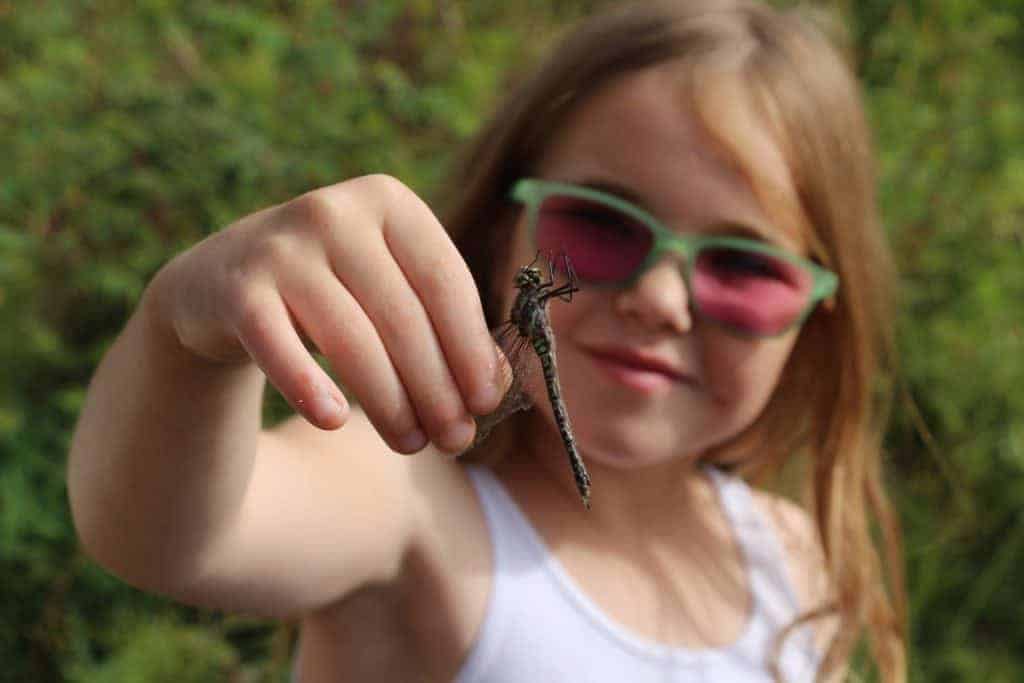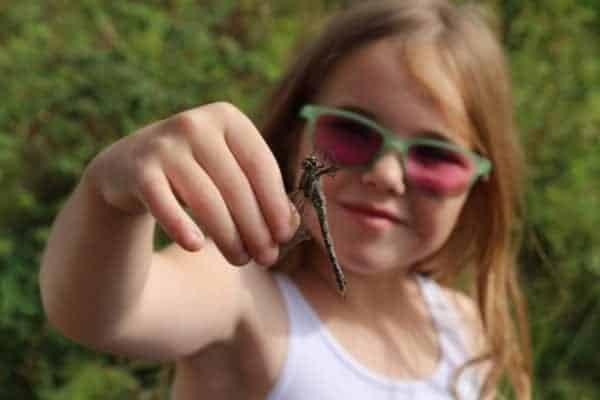Inuvik’s streets are filled with more than 100 species of plants, and most of them are native to the area.

Brooke Smith holds up a dead dragonfly she found during the BioBlitz.
That’s in stark contrast to most cities in the south, which are full of weeds and introduced plants.
Paul M. Catling, who was in Inuvik during a BioBlitz this week, said 95 per cent of the plants in town are native to the area.
“In town is a special kind of habitat,” said Catling, speaking during an introduction to BioBlitz at the Aurora Research Institute Sunday, July 30.
The event challenges residents to document the plant and animal life in their own community. After an introduction at ARI, community members set off with scientists to check out what could be found around Inuvik.
Catling pointed to the large amount of foxtail grass in town, which he said would have been the same grass the mammoths were trampling thousands of years ago.
The reason it grows in town more so than out on the land is because of the disturbed conditions in the city limits, he said.
“This part of the north is fascinating,” said Catling. “It has a lot of stuff that isn’t anywhere else in Canada. It’s unique and it’s fascinating and it’s rich.”
Runel Jimenez, organizer of the BioBlitz with the Canadian Wildlife Federation, was touring with the group throughout the territory, having just spend some time in Tuktoyaktuk.
“At its heart, (the BioBlitz) is an event where we bring the public and scientists together to identify as many species in the local area (as possible) in a specific time period,” said Jimenez.
“In Inuvik, there is all sorts of life and we’re here to examine how great our biodiversity is.”
In Tuktoyaktuk, the group found a lot of bumblebees, Arctic orchids and of course mosquitos and sandflies.
Talking to locals about the differences over the last 20 years, Jimenez heard there were more eagles and robins in the area now.
Anyone who didn’t get to join the group on the Sunday blitz can still take part in the Canada 150 event by uploading photos of plants and species in the area to inaturalist.ca, an open-source data base for Canadian scientists to investigate the country’s biodiversity.
